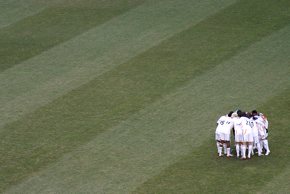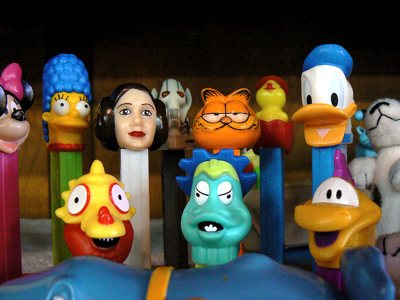12 August 2010

I have been reading Seth Godin’s book
Linchpin. In this book he asks us to question the current work system and whether we want to be part of an old or a new one.
Although most of us might assume the system we work in is how it has always been and will be, Seth makes a point in questioning those assumptions. He urges us to explore different, and maybe unfamiliar, ways of working. Ways that make you stand out, and are essentially more aligned with who you want to be.
This got me thinking. While he talks about business, I am wondering when you last questioned the approaches and strategies in your personal life?
Are you disappointed about outcomes that seem to repeat themselves? Do you regularly discover ways of doing that might not work anymore? Maybe there are some that belong to your younger self, not the current self.
From the day we are born we learn how to react to all kinds of situations, consciously and unconsciously. We develop coping strategies that help us deal with difficult situations. In the past they helped us a lot, but are they still useful today?
The point is that we often apply those learned responses and coping strategies without thinking twice about it. If you are not happy with certain outcomes, maybe it is time to start exploring whether you might be able to do things differently.
You might also want to read:
What motivates you
Do you know your why?
Ten important questions to ask yourself
Do your beliefs support you or hold you back?
Tags: achieve, change, inspiration, motivation, possibility, support, unstuck
Posted in Uncategorized | 2 Comments »
10 August 2010

Jon Kabat-Zinn’s book
“Wherever you go there you are” is one of those books I haven’t put back on the bookshelf after I finished reading it. From time to time I just re-read one of its short chapters. Sometimes as a reminder, inspiration or to regain some simplicity in my life.
Over the last few years I have gradually integrated mindfulness in my life. This practice helps me live my life fuller and more aware. It fosters my curiosity and opens a door to all my emotions, feelings, thoughts and visions in my life. The more mindful my way of living becomes the more freedom I feel I create wherein I can make choices and welcome changes.
I want to share with you a few things I have learned
1. Become aware of what is going on in your body and your mind.
2. Get in touch with the many aspects of your life. The dark faces, the pain, the fear, the happiness, the joyous moments, habits, assumptions, judgements, struggles, your beliefs.
3. Acknowledge that what is happening is happening.
4. The more you practice mindfulness the more you will see things clearly and you will be able to position yourself differently in relationship to them.
5. Let go: Holding on to your struggles, your likes and dislikes, hold you back in discovering and expanding your possibilities. Allow things to be as they are for you to find your own way.
6. Find your moments of simplicity: Even in a life where you have to manage family, work, children, friends, etc.
Choose to do one thing at a time. Start with small things. Do them mindfully.
7. Stop what you are doing: From time to time, take time out to observe what you see, hear, feel, what is happening around you.
8. Ask yourself “Where is my mind right now?” Do this a few times a day. You will be surprised how often your mind is not here, but visiting other places.
“You can’t stop the waves but you can learn to surf”
Swami Satchitananda in “Wherever you go there you are”
You might also want to read:
Video: Mindfulness with Jon-Kabatt ZInn
Tags: change, curious, direction, mindfulness, possibility, stress, unstuck
Posted in Uncategorized | No Comments »
5 August 2010

What are you waiting for? For the train to arrive, the dentist to call your name or for things to change so that you can move on.
Do you know that feeling as if you are in a waiting room not knowing what to do, or what decisions to make? No doors or too many doors. In both cases you are in there and don’t go forward, backward or sideward. You are stuck.
When you find yourself in a state of inertia it is often accompanied by low energy and a feeling of being overwhelmed.
For example, you might wish to feel better, to be happier, but don’t know where to start. All seems to be too difficult. “Being happier” is a big and abstract idea that is difficult to grasp.
It is much easier to ask yourself, what are the small things that make you feel better on a daily basis. For one person, it might be going for a walk, for someone else it is meeting a friend. I am sure you can come up with many small things for yourself.
Break down something that is too big, too abstract into small and specific actions. When you do that, you can get yourself out of the waiting room. Because all you have to do is do one small and simple action. You get yourself moving.
One small action, that is all you have to start with.
“Nothing will be attempted if all possible obstacles must first be removed”
Samuel Johnson
You might also want to read:
3 Things to remember when you face change
Dream, Dare, Do
Tags: achieve, change, direction, mindfulness, motivation, support, unstuck
Posted in Uncategorized | No Comments »
3 August 2010

When I was young, my mother read me bedtime stories. My favourite story was about a boy who didn’t listen to his parents and got caught by an evil man in a hot air balloon. The boy soon was able to throw this man out of the balloon and off he went on an adventure. On his journey, he encountered witches, magicians, demons, monkeys and the cold. However, none of them was able to harm him. In the end the boy, of course, returns back home in the arms of his mother.
As a child I couldn’t get enough of this story about the boy who wasn’t afraid to go on a journey, face those demons and who had seemed to have grown during his journey.
Fairy tales, stories and myths have been told throughout time. They played an important part in the development and growth of people. They carried wisdom. Stories taught human beings about the inner and outer demons and the importance of knowing the light and the darkness in our life.
A recurrent theme in fairy tales is the search of something the main character has lost or wants to find. Only when the main character gets to know and learns about every creature and situation she meets, can she move on and find what she was looking for.
It is often the shadows in our life we run away from. Instead, try to have a dialogue with them. I know it is difficult, but it will get easier. Just as the light also the shadow is part of us and worth knowing.
I am wondering which stories have guided your life? How would your stories look like?
“At critical moments in history mythic sense tries to return to awareness in order to indicate life’s inherent capacity for renewal.”
Michael Meade, “World Behind the World”
You might also want to read:
Do you know who you are?
Posted in Uncategorized | No Comments »
29 July 2010

Thinking about the kind of changes you want to make in your life is an important first step to take. Maybe you want to feel better, improve the relationship with your partner or want to have a better job. Where most of us get stuck is how to translate our wish for change into actions. There is often a big gap between knowing what you want to change and actually doing it. At times it can be overwhelming because you don’t know where to start or fear comes in the way.
Ben Tiggelaar, bestselling author, researcher and speaker in the field of leadership, change and human behavior has written about what it takes to go from thinking to doing in “Dream, Dare, Do”.
Here are some useful tips from his article I want to share with you:
1. Your daily behaviour determines the results in your life. The things you do every day are critical.
2. When you translate goals into specific behavior you significantly increase your chance to achieve those goals.
3. You don’t have to become a different person, when you want to change. Just be more like yourself as you are in your best moments.
4. Become aware of your exceptionally good moments and describe in detail what you are doing in those moments.
5. Plan ahead. Come up with actions you can apply in times when you encounter obstacles or setbacks.
Read in more detail how you can make lasting change here.
Tags: change, direction, inspiration, motivation, possibility, support, unstuck
Posted in Uncategorized | 1 Comment »
27 July 2010

“Be authentic, be true to yourself” – an advice I often hear. People tell us to be authentic when we make new friends, start a new relationship or need to make some changes in our life. However, what does it mean, being authentic. How do you know you are true to yourself?
The thing is we are not just one real self, but have many different parts.
Those parts play out in varying degrees depending on the roles and the situations we are in. Imagine, you introduce yourself at a business networking meeting, or get acquainted with other parents of your child’s new school.
Which words would you use to describe yourself in those different situations and roles? You will probably notice that some words seem to be more dominant than others and some might even be in conflict.
Take the following example. A parent is so happy for her daughter to work in a job she enjoys. However, at the same time she might feel a sense of loss and disconnection, because her daughter is now thousands of miles away.
The problem is when we identify ourselves to just one part we get stuck in a problem, a situation or behaviour that is not helpful to us.
Realising, that ‘you’ consists of many parts, is the first step to make changes and get unstuck.
The more you are curious about the different faces of yourself and become aware of them the better you will be able to create a balance. You will be able to nurture parts that were more passive and therefore change the dynamics.
“The curious paradox is that when I accept myself just as I am, then I can change”
Carl Rogers
You might also want to read:
Conversations with my pink elephant
Tags: change, curious, direction, mindfulness, stress, unstuck
Posted in Uncategorized | No Comments »









